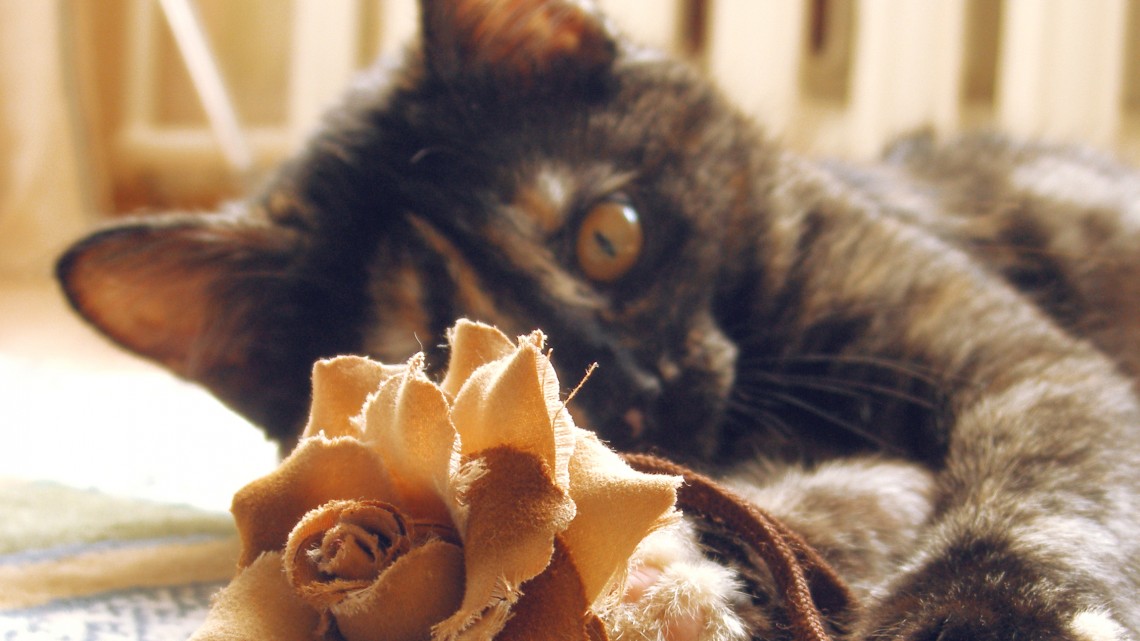Given the feline nature, cat photography can be something of a challenge. But with patience and perseverance, along with a few useful tips for the best results, you can snap successful pictures.
Every cat person loves looking at pictures of kitties. Do you often find yourself browsing through the pages of your favorite cat book, magazine or website and enjoying all the photos? I know I do. It inspired me to take my own pictures, only to discover that capturing a good photo of my treasured kitty wasn’t as easy as it looked.
Patience is key
On one occasion, my cat Cici slept curled on the carpet with all four paws under her chin. I saw it as a great opportunity to take some photos of her regular daily routine. But as soon as I found my digital camera and made myself comfy on the carpet next to her, she got up, stretched, turned around and curled up again with her back to me. How rude! First lesson in cat photography: patience is a virtue.
Have you ever watched those wildlife documentaries in which the camera crew is staked out behind a bush for hours just waiting for that perfect moment to film? Well, taking photos of your cat can prove to be much like that. If I had staked out Cici before she struck that pose, I would not have disturbed her, giving myself the opportunity to
take as many shots as I wanted.
Technically speaking
All digital cameras take photos in pixels. The more pixels, the better the image resolution of the photo. In other words, you’ll get better images of your cat with a high resolution camera. A mega pixel is equal to one million pixels, so look at your camera specs to see how many MPs it takes. Today, even a digital camera that costs about $50 takes at least 5MP photos. And most come with a standard 2GB (giga bite) storage memory card that can hold about 1,600 photos.
Snap shots
The following tips will help ensure a winning photo:
- When you see a shot you really like but there’s a background of clutter, get a large piece of cloth like a blanket or sheet and mask the mess.
- For a really good frame, you need to get down to your cat’s level. Be discreet, because if your cat is anything like Cici, she’ll scamper away as soon as she realizes something is going on.
- Forget the flash. If it blinds humans you can only imagine what it does to your kitty. Also, a flash tends to either give a cat red-eye or a pair of bright headlights for eyes. Consider your cat’s coloring as well. Cici is a tortoiseshell with pure white fur on her chest that tends to reflect light, so I avoid a flash whenever I can.
- Opt for natural lighting. Encourage your cat to lounge near a window or take her outside in a safe setting. Don’t photograph her in the harsh sunshine of midday, but in the more subtle lighting of sunset or late afternoon.
- Light colored cats looked better on dark backgrounds and dark cats on lighter ones.
- If your cat isn’t sleeping, use food, catnip or toys to get his attention.
- Before you start photographing, make sure you have turned off the snap sound on your digital camera. The sound is likely to distract your kitty, and may even scare him away.
- Make sure you hold the camera steady, especially if you are going to zoom – the slightest jiggle will blur the frame. I’ve noticed that even clicking the shutter jolts the camera, so be extra careful.
- Take full framed photos. You can always crop them later with the help of your PC. Since most digital cameras have a fairly large number of mega-pixels, cropped photos maintains good quality and resolution.
- Take as many photos as you can before your cat moves. Thanks to digital technology, you can click away until you feel you have that special shot.
- To properly view the photos you have taken, upload them to your PC. That’s the only way to really tell if the frame is blurred or not. You might create a separate folder so you can move all the good photos into it rather than going back and trying to locate them at a later date. There has to be at least one shot that makes you feel all warm and fuzzy inside!
Successful cat photography can be challenging, but it’s far from impossible. Even if you’re not entirely satisfied with the results of your first session, you can always schedule another!




No Comment